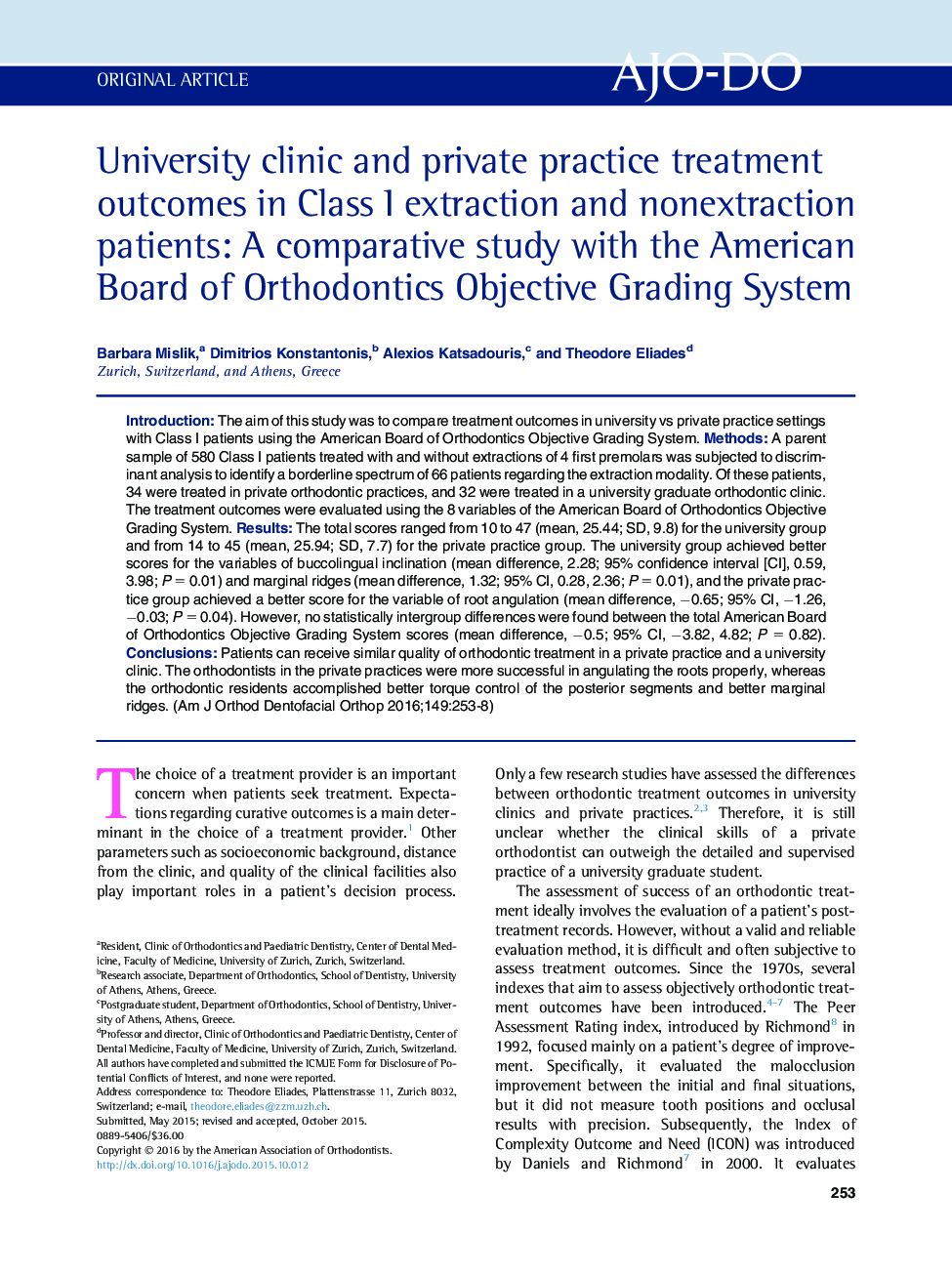| Article ID | Journal | Published Year | Pages | File Type |
|---|---|---|---|---|
| 3115725 | American Journal of Orthodontics and Dentofacial Orthopedics | 2016 | 6 Pages |
•Treatment results were compared between private practices and a university clinic.•The American Board of Orthodontics Objective Grading System was used to assess outcomes.•The probability of acceptable treatment was the same and unrelated to setting.•The university group had better scores for buccolingual inclination and marginal ridges.•The private practice group was more efficient in angulating the roots properly.
IntroductionThe aim of this study was to compare treatment outcomes in university vs private practice settings with Class I patients using the American Board of Orthodontics Objective Grading System.MethodsA parent sample of 580 Class I patients treated with and without extractions of 4 first premolars was subjected to discriminant analysis to identify a borderline spectrum of 66 patients regarding the extraction modality. Of these patients, 34 were treated in private orthodontic practices, and 32 were treated in a university graduate orthodontic clinic. The treatment outcomes were evaluated using the 8 variables of the American Board of Orthodontics Objective Grading System.ResultsThe total scores ranged from 10 to 47 (mean, 25.44; SD, 9.8) for the university group and from 14 to 45 (mean, 25.94; SD, 7.7) for the private practice group. The university group achieved better scores for the variables of buccolingual inclination (mean difference, 2.28; 95% confidence interval [CI], 0.59, 3.98; P = 0.01) and marginal ridges (mean difference, 1.32; 95% CI, 0.28, 2.36; P = 0.01), and the private practice group achieved a better score for the variable of root angulation (mean difference, −0.65; 95% CI, −1.26, −0.03; P = 0.04). However, no statistically intergroup differences were found between the total American Board of Orthodontics Objective Grading System scores (mean difference, −0.5; 95% CI, −3.82, 4.82; P = 0.82).ConclusionsPatients can receive similar quality of orthodontic treatment in a private practice and a university clinic. The orthodontists in the private practices were more successful in angulating the roots properly, whereas the orthodontic residents accomplished better torque control of the posterior segments and better marginal ridges.
